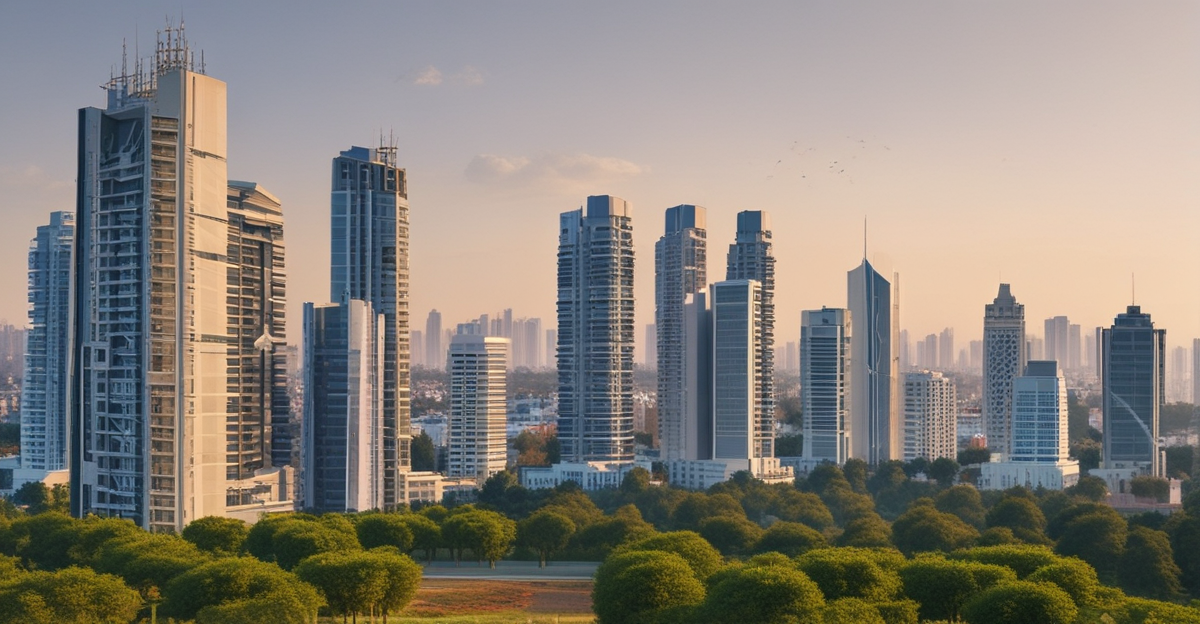Discover how Tier-II and III cities in India are becoming vibrant startup ecosystems, driven by innovation and untapped market potential.
Auto-published by Growwh – a smarter way to scale content and marketing. Want to know more? Chat with us.
 India’s startup landscape has historically been synonymous with its bustling metropolitan areas such as Bengaluru, Mumbai, Delhi-NCR, and Hyderabad. These Tier-I cities have long provided a robust infrastructure, significant access to funding, and a mature talent pool. However, a transformative shift is occurring, revealing that India’s Tier-II and Tier-III cities are rapidly emerging as dynamic engines of startup growth and innovation.
India’s startup landscape has historically been synonymous with its bustling metropolitan areas such as Bengaluru, Mumbai, Delhi-NCR, and Hyderabad. These Tier-I cities have long provided a robust infrastructure, significant access to funding, and a mature talent pool. However, a transformative shift is occurring, revealing that India’s Tier-II and Tier-III cities are rapidly emerging as dynamic engines of startup growth and innovation.
The Rise of Tier-II and III Cities
From Bhopal to Bhubaneswar, and Kochi to Kanpur, local entrepreneurs are now launching high-impact ventures that cater to the unique needs and challenges faced by their communities. Investors are increasingly recognizing the potential of these regions, driven by their massive untapped markets where startups are innovating in diverse sectors, ranging from agri-tech and education to vernacular content and logistics.
The Democratic Nature of Entrepreneurship
A crucial factor driving this transformation is the rapid digital penetration witnessed across the nation. With over 800 million internet users in the country, digital literacy has been on an upward trajectory, catalyzed by affordable smartphones and low data costs. This unprecedented growth is leveling the playing field, enabling talented entrepreneurs in smaller towns to harness the same resources and platforms as their counterparts in bigger cities.
Ready to take your brand to the next level?
At Growwh, we help startups and emerging brands grow faster with powerful content, creator collaborations, and tech solutions.
Explore what we do →
Policy Support Bolstering Growth
Additionally, government initiatives have played a significant role in nurturing entrepreneurship across emerging regions. Through startup-friendly policies and schemes, local governments are encouraging innovation and providing necessary support to budding entrepreneurs.
Cost Advantages and Market Opportunities
One of the most compelling advantages of establishing a startup in Tier-II and III cities is the substantially lower operational costs. Examine the lower prices of real estate, manpower, and logistics, which allow startups to conserve their resources. This financial prudence empowers them to test and iterate on their ideas without the pressure resulting from high overhead costs. Moreover, these cities present untapped markets that are ripe for disruption. Entrepreneurs possess an inherent understanding of the unique challenges their communities face. Innovative solutions are emerging, such as agritech initiatives that revolutionize farming techniques in Punjab, edtech ventures offering vernacular learning tools in Bihar, and fintech firms addressing the banking needs of unbanked populations in Rajasthan.
The Emergence of Local Ecosystems
The upsurge of local incubators, accelerators, and co-working spaces has become a hallmark of the startup culture in smaller cities. Educational institutions, especially IITs, NITs, and other domain-specific universities, have begun establishing entrepreneurial ecosystems through E-cells and entrepreneurship hubs, cultivating the next generation of innovators. In parallel, there has been a rise of micro-VCs and angel investors concentrating on early-stage startups in these regions, offering much-needed capital and mentorship tailored to the unique needs of the local startup ecosystem.
Regional Startup Success Stories
The success of regional startups serves as powerful validation for aspiring entrepreneurs. Companies like Zoho, headquartered in Tenkasi, Tamil Nadu, exemplify thriving business models outside traditional settings. Other startups such as iDreamCareer from Bhubaneswar and Freshokartz from Jaipur are making significant contributions to their industries. These success stories debunk the stereotype that a startup’s potential is determined by its geographical location. In fact, operating from smaller towns may provide strategic advantages, particularly for those targeting the vast Bharat—the India with over 900 million people residing outside growing metro areas.
A New Wave of Confidence
Today’s Tier-II and III cities are no longer striving to catch up; they are innovating, creating, and defining new standards. The increasing interest from venture capitalists conveys a strong message of confidence in the ability of these regions to foster cutting-edge enterprises. This emerging trend is an affirmation of the Rise of Bharat, as startups continue to reshape what innovation means for a diverse and expansive demographic. For investors and stakeholders in India’s entrepreneurial ecosystem, this presents a unique opportunity: investing in startups in smaller towns is not just about monetary gains; it is also about fostering inclusive economic development. As the boundaries between Bharat and metropolitan India continue to blur, one thing seems certain: the next great unicorn could easily emerge from an unfamiliar town; a town bursting with untapped potential.
This exploration into India’s Tier-II and Tier-III cities underscores an exciting evolution in the startup universe, showcasing how innovation can transcend geography and create opportunities across the nation.
Source
This article was auto-generated as part of a smart content campaign. Curious how we do it? Chat with us to learn more about our content automation systems.
Discover more from Growwh
Subscribe to get the latest posts sent to your email.


